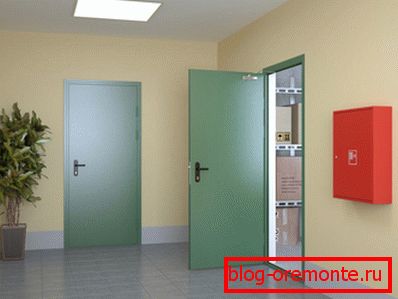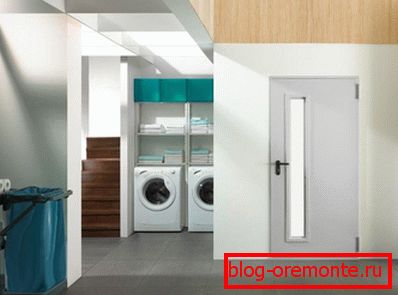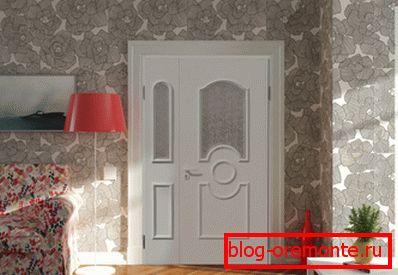Gost: installation of fire doors
There are norms according to which the places are determined where fire doors must be installed by definition - otherwise the object cannot be put into operation. As for private properties, if the owner of the house has such a desire, he can put the fire door anywhere with his own hands - even in the bedroom.
In this regard, many are interested in how the manufacture of fire doors is carried out - according to GOST or is there other official standards? We will present you a brief overview of existing standards, and the video in this article will complement our information.
What guides manufacturers
Many people are mistaken in thinking that there is such a GOST: "Making fire doors." In fact, special-purpose doors are manufactured according to specifications (TU) developed by the manufacturers themselves.
Note! TU are created taking into account the requirements put forward by the standard 53307 * 2009, where the test methods of doors for resistance to fire are given. There are also norms 2.01.02-85 *: this set of rules classifies all buildings according to the degree of fire resistance, puts forward requirements for their constructive solutions, as well as arranging ways to evacuate people from buildings.

Installation of fire doors, SNiP, which we mentioned above, also regulates, but only some of the nuances. In general, all installation work in the domestic construction industry is carried out in accordance with the requirements of another document: the standard number 3.03.01 * 87. It applies to the installation of enclosing structures, which include doors.
Where to put fire doors
Before we talk about how the manufacture of fire doors on the TU, we turn to the current standards and clarify what special requirements are put forward regarding the internal layout of buildings. The dimensions of the doorways depend on this, and the doors, as we know, are made in accordance with them.
So:
- They are installed, first of all, in the technical compartments, basement and attic floors, designed to accommodate communication equipment and laying internal networks. In such rooms, it is necessary to go outside, the size of the doors should not be less than 0.75 * 1.5 m.
- If the total area of the technical floor exceeds 300m2, the room should be no longer one, but two fire doors. This is done to ensure that people in the basement are not in a hopeless situation.

- The special requirements of the SNiP imposes and to attics. In buildings with a height of more than 10 m, staircases are provided for exits directly to the roof - if the house has a bureaucratic structure, or to the attic, from where you can evacuate along an external fire escape.
- All these exits are also equipped with fire doors. The number of such exits depends on the length of the building: one door per half or one hundred meters is provided.
- As for industrial buildings: shops, warehouses and technical premises, then, according to SNiP, installation of fire doors in them should be carried out around the perimeter every two hundred meters. In single-storey buildings with an area of less than 100m2, access to the roof may not be arranged.

- Fire safety in construction is determined by another document - this is the standard of CMEA 3974 * 85. From it follows that the doors, depending on the type of aperture in the fire barrier, are divided into three types. This means that they can have different levels of fire resistance: Type 1 - 60 minutes; Type 2 - 30 minutes; Type 3 - 15 minutes.
Attention! The limit of fire resistance is expressed in minutes and means that the construction should last for so long under the pressure of the fire element. With the appropriate approach in the manufacture of steel fire door can withstand two or even four hours of extreme high-temperature exposure. These doors are often made to order.
- This standard clearly states where and what type of fire doors must be installed. But even where EI-15 fireproof doors are sufficient, they most often install EI-60. The fact is that the price of a fire safety certificate, which the manufacturer needs to have, is quite high - at least 370,000 rubles.
Having paid such a sum, it becomes simply unprofitable for manufacturers to produce cheaper doors with low fire resistance rates. Since EI-60 covers all requirements for doors 2 and 3 of type, the solution to install identical doors of type 1 everywhere is optimal for builders.
What do fire doors do
Most people think that the fire door can only be made of steel. In fact, even for the manufacture of doors of the first type (with a fire resistance of 60 minutes), the standard allows the use of wood. In this case, a mandatory condition is set that it will be protected from all sides by non-combustible materials or subjected to deep impregnation by fire-and-bio-protective composition.
So:
- In practice, such doors rarely have a fire resistance higher than EI-30. Mostly they are placed inside administrative and residential buildings, in children's institutions. You can see one of such examples in the photo below - here fire doors made of wood (see wooden doors — GOST - GOST guarantees quality) are installed in the reception manager.

Flame retardant plastic
As for non-flammable cladding for wooden doors, today for this purpose use HPL and CPL plastic. These are modern polymer laminates produced by high pressure pressing methods.
HPL is a sheet material with a thickness of 1-4 mm, which not only has a high degree of fire resistance, but also has anti-shock properties. It is used even in the decoration of facades.
- CPL has a thickness of from 0.2 to 1.4 mm, and depending on this can be produced both in sheets and in rolls. It is most often used for cladding door panels. In general, it is furniture plastic, and it is used not only to provide fire resistance, but also for decorative purposes.

CPL cladding can imitate any wood veneer or have a very unusual decor. The door of white plastic also looks good, and in home interiors more and more often you can see just such an option.
Moreover, the service life of doors with such high-strength finish is practically unlimited, and they are able to withstand an open flame for at least 30 minutes.
Distinctive features of fire doors
Plastic doors that are resistant to open flame, as well as metal canvases, usually have glazing made of reinforced or refractory glass. Only the glazing should not occupy more than 20% of the total area of the canvas. Steel doors are put mainly on the ways of evacuation of people inside and outside the building, as well as in industrial premises.
So:
- The main requirements that apply to fire escape doors are the presence of a door closer; quality seal in the vestibule; locking mechanism that easily opens from the inside without a key.
- Open such doors should be strictly in the direction of exit from the building to the street. As for their installation, there are no features here. Everything is done in accordance with the design of the product, and for this there is a manufacturer's manual.

All doors for special purposes must be certified, and the manufacturer gives them a guarantee. When buying fire-prevention doors, the main criterion for choosing should be not their cost, but their performance - after all, it is they who save lives in a force majeure situation.